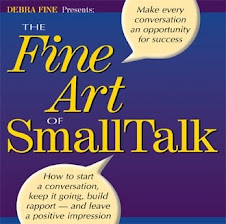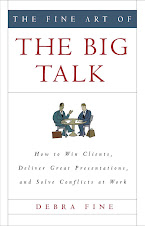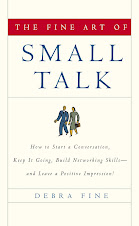
Welcome back to The Fine Art of Small Talk wedding series. Hopefully you’ve read the first two wedding series installments - How To Interact With In-laws and Get the Wedding Party Properly Prepped to Talk. You’ve learned some techniques for getting your families and wedding party talking and now it’s time to address the guests.
Toasts are an important part of a wedding. In a way, they can set the tone for the event, so delivery of a toast is paramount. Because many people fear public speaking, that look-at-me moment can be nerve-racking. Whether you’re planning a toast to your guests or you want to get your toast-givers up to toasting standards, there are some rules to a cheerful cheers. Here are some wedding toast tips to put you on top.
1) Do your homework. Know your audience. Who are they? What will they find touching or funny or inappropriate? Determine the duration of time allotted for your toast. Generally two minutes is an appropriate length of time, but try to stick to what the bride and groom have suggested. If a microphone is in the plan do sound checks before attendees arrive at the venue. All in all, know your assignment and deliver it well and timely.
2) Craft a fitting speech. Match the tone to the event, and then determine your message or theme. Jokes may be well-received at a bachelor party or bridal shower but not at the rehearsal or wedding dinner. You could joke that Molly and Paul met somewhat unconventionally, but not that Molly cyber-stalked him for a year. Always keep your goal in mind and how you would like your words to be remembered. Use your own words and speak from the heart to make it more meaningful. Remember that the focus is on the couple, not you. Be complimentary, sincere and mature. The point of a toast is to say something nice.
3) Practice makes perfect. Practice your toast several times. Rehearse it in front of a mirror. Ask your roommate to listen to it and give feedback. Aim to repeat your toast without notes. If you can, go to the event site and practice your toast, so you feel comfortable in the environment.
4) Attract audience attention. Either click glasses (being careful not to cause breakage) or even more effective: stand up and use eye contact to quiet your audience and get their attention. Create a presence where everyone can see you and pay attention.
5) Hold yourself confidently. Remain standing, put a smile on your face, maintain excellent posture, keep your body open (i.e. no crossed arms and feet just less than shoulder width apart) and hold a glass containing an appropriate beverage in one hand.
6) Connect with your audience. As you begin to deliver your toast look at the couple and then look across the audience, making eye contact with a few people throughout the crowd. This gives the appearance of addressing the entire crowd. As you mention names, like that of the bride and groom, look at them to make it feel warmer.
7) Be crystal clear. Speak slowly and deliberately so that you are easily understood. Use short silences to calm your nerves in the middle of your toast. Calculated pauses often contribute to a joke or touching moment, so don’t be afraid of a brief silence.
8) Close with class. Lift your glass and ask everyone to join you in toasting the couple at the end of your speech. An appropriate final phrase might be, “Cheers to the wonderful couple” or “Here’s to the journey.” Then, sip, don’t chug, from your glass.
Follow these tips and your toast will be the talk of the town (in a good way).
There are a lot of things to worry about when planning a wedding. Interacting and socializing shouldn’t be one of them! Over the next few months, I’ll continue to provide you with some full-proof talking tips so you can enjoy all the conversations leading up to and during your wedding. If you follow these tips, you and your guests will be able to focus on enjoying the big day and all the special moments along the way.





